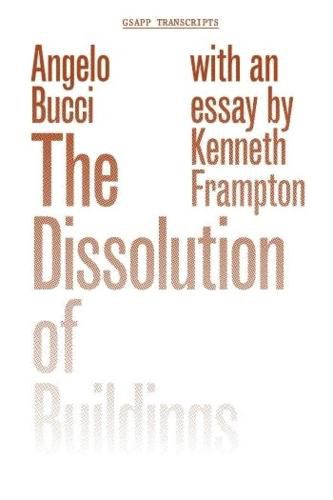Readings Newsletter
Become a Readings Member to make your shopping experience even easier.
Sign in or sign up for free!
You’re not far away from qualifying for FREE standard shipping within Australia
You’ve qualified for FREE standard shipping within Australia
The cart is loading…






Can an architect pass through walls? Can the city permeate a house? In The Dissolution of Buildings, architect Angelo Bucci presents projects in his native Sao Paulo and abroad. Advocating an architecture that is the opposite of global action, his work responds to the topography of the city and to its urban environment. In a lecture delivered at Columbia University’s Graduate School of Architecture, Planning and Preservation, Bucci discusses work designed with his firm SPBR, projects that span from the scale of the house to the city. His built work is here accompanied by an excerpt from his doctoral dissertation, which explores how the devices available to architecture-and the sectional manipulation of groundplanes in particular-can mitigate some of the inequities and exclusions built in to the fabric of the contemporary city. An essay by Kenneth Frampton frames these projects within the rich lineage of Brazilian house design and members of the Paulista school such as Paulo Mendes da Rocha and Joao Batista Vilanova Artigas.
$9.00 standard shipping within Australia
FREE standard shipping within Australia for orders over $100.00
Express & International shipping calculated at checkout
Can an architect pass through walls? Can the city permeate a house? In The Dissolution of Buildings, architect Angelo Bucci presents projects in his native Sao Paulo and abroad. Advocating an architecture that is the opposite of global action, his work responds to the topography of the city and to its urban environment. In a lecture delivered at Columbia University’s Graduate School of Architecture, Planning and Preservation, Bucci discusses work designed with his firm SPBR, projects that span from the scale of the house to the city. His built work is here accompanied by an excerpt from his doctoral dissertation, which explores how the devices available to architecture-and the sectional manipulation of groundplanes in particular-can mitigate some of the inequities and exclusions built in to the fabric of the contemporary city. An essay by Kenneth Frampton frames these projects within the rich lineage of Brazilian house design and members of the Paulista school such as Paulo Mendes da Rocha and Joao Batista Vilanova Artigas.